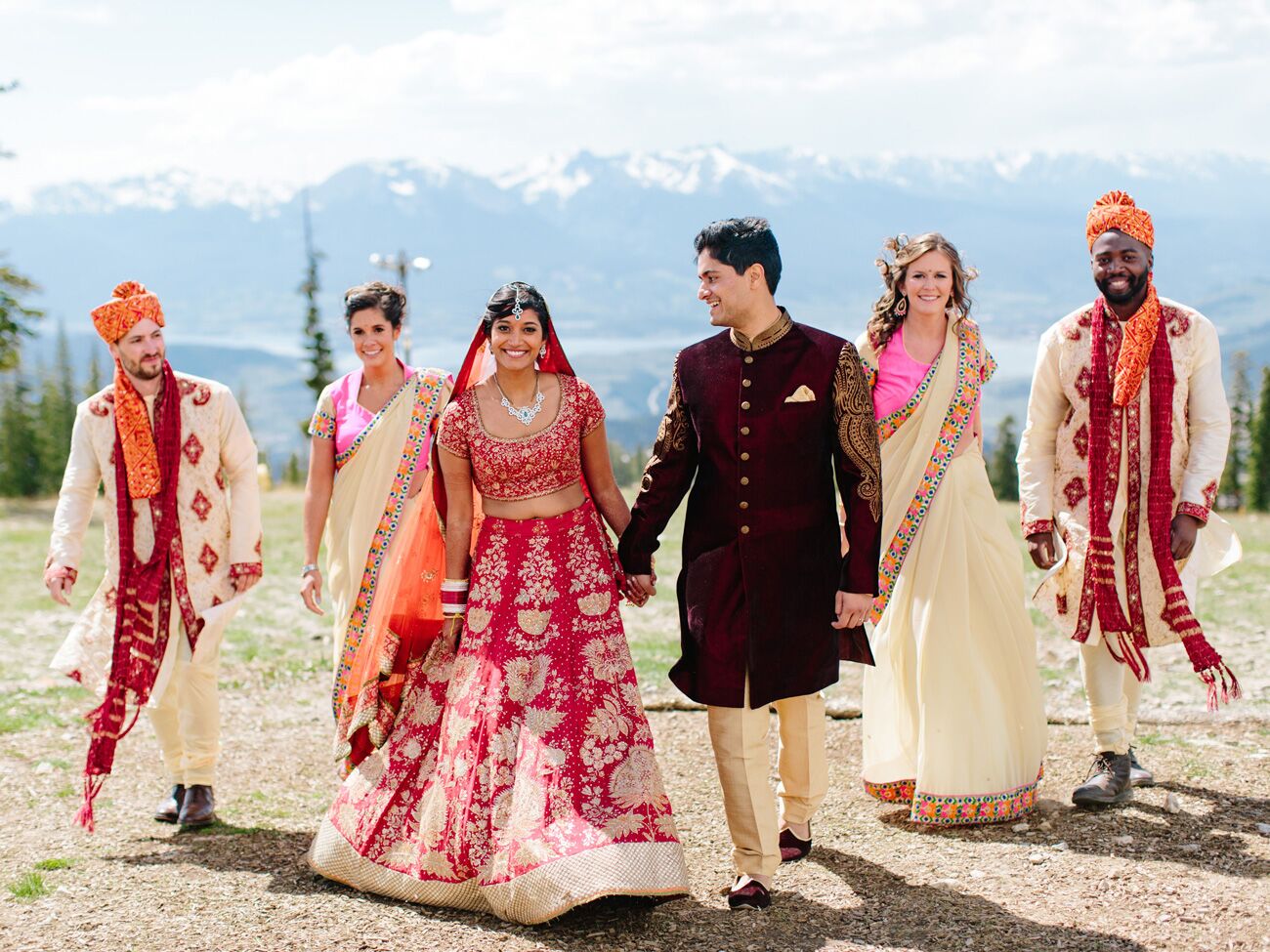It wouldn’t be a complete list of Indian wedding festivities if we didn’t talk about the Great Indian Wedding Festival in its entirety. The wedding season is full of joy, celebration and wonder. An auspicious day for all engaged couples, this festival is as important as it is symbolic. It is a time when families get together to celebrate the union of two souls.
A time when friends and well-wishers come together to shower love and good wishes on the bride and groom. It is also a significant day for the extended family as most weddings are an opportunity to meet those who are not usually part of their lives. The great Indian wedding festival encompasses everything from the engagement period to the final ceremony.
In essence, it is a culmination of all that has gone on before with lots of pomp, ceremony and elaborate celebrations throughout. This article will try to give you an overview of everything that happens during this period to help you plan your future nuptials properly; from choosing your partner, arranging pre-wedding ceremonies and ceremonies themselves, finding venues for receptions and much more!

What to Expect When Attending a Hindu Wedding?
There are a wide variety of reasons for getting married but the most common one is the desire to settle down with one person. A union between two people is considered sacred and is believed to bring a degree of happiness and prosperity to the union. Hindu marriages function based on the concept of ‘soul mates’.
People are usually very specific when choosing their life partners. They want someone good-looking, who has a good education, who can make them happy, etc. Apart from the preferences that people have when choosing their partners, the wedding ceremony in a Hindu marriage is also considered essential. This is the moment when the two people exchange their promises of love, respect and commitment.

St Valentine’s Day: Weddings in the Christian Community
There are many examples of two people who were meant to be together but were separated by circumstances. It is said that these lovers were ‘destined to meet’. Valentine’s day is celebrated as a gift-giving day. In the past, people exchanged cards and gifts with their loved ones as a token of their love. For many years, the concept of exchanging gifts and cards has been associated with love.
However, over time, the celebration has become commercialized, with many people using this day to buy gifts for their partners. This practice is not encouraged in any religion and people who choose to celebrate this day are advised to show restraint.

Commitment
There are many instances in the movies when people exchange rings as a symbol of their commitment to each other. The ceremony of exchanging rings is called ‘nikkah’ in Islam, ‘Lakshana’ in South India and ‘vilakshi’ in South Indian marriages.
The ring symbolizes a pledge of commitment between two people. It is believed that the person who gives the ring to their partner is promising to love and care for them until death comes. It is considered a mark of ownership and an assurance of permanency in a relationship.

The Wedding Ceremony and Reception
The wedding ceremony is very important for a Hindu couple. The wedding ceremony often takes place in a wedding hall or a temple. This time is very important for the couple as it is a time when they say ‘I do’ and pledge their undying love and commitment to each other. The wedding is an occasion for the couple and their family and friends to celebrate the union.
The wedding ceremony itself can vary a lot depending on the regional customs and traditions. The ceremony usually begins with the groom arriving at the temple or the hall with the bride on his arm. He then greets the guests and checks if they are present in the hall or not.
When everyone is present, the couple exchanges their vows before walking down the aisle to receive blessings from their loved ones. After that, the couple sits down and the guests start to offer them gifts.

The Sangeet and Uthappam Dance Celebration
There are many parts of the wedding celebration in a Hindu marriage that is meant to be joyful and fun. One of these parts is the Sangeet or the bride’s procession. A huge procession is usually organised with musicians, dancers and traditional decorations. The bride is usually dressed up in a beautiful sari with jewellery and flowers in her hair.
The Sangeet is a very important part of the wedding celebration as it is when the bride walks in front of her friends and family and receives blessings from them. The Sangeet is followed by the Uthappam or the reception. This is a very symbolic part of the wedding ceremony as it is when the couple eats the food that is offered to them at the reception.
It is believed that this part of the wedding celebration is meant to symbolise the nourishment that the newly married couple will receive from their marriage.

Conclusion
The Great Indian Wedding Festival is a time of celebration for engaged couples and their families. This is a time for people to get together, make new friends, and celebrate love with their partners. The festival also holds special significance for Hindus. It’s important to note, however, that this is a time-honoured tradition practised by many cultures around the world and is not confined to any one religion or culture. The Great Indian Wedding Festival is not a one-time event.
It lasts for many months leading up to the big day. During this time, engaged couples are busy planning their future together. They are looking at each other with love and anticipation. They are also looking at their families, friends and elders. They are trying to come up with a good idea for the future.












